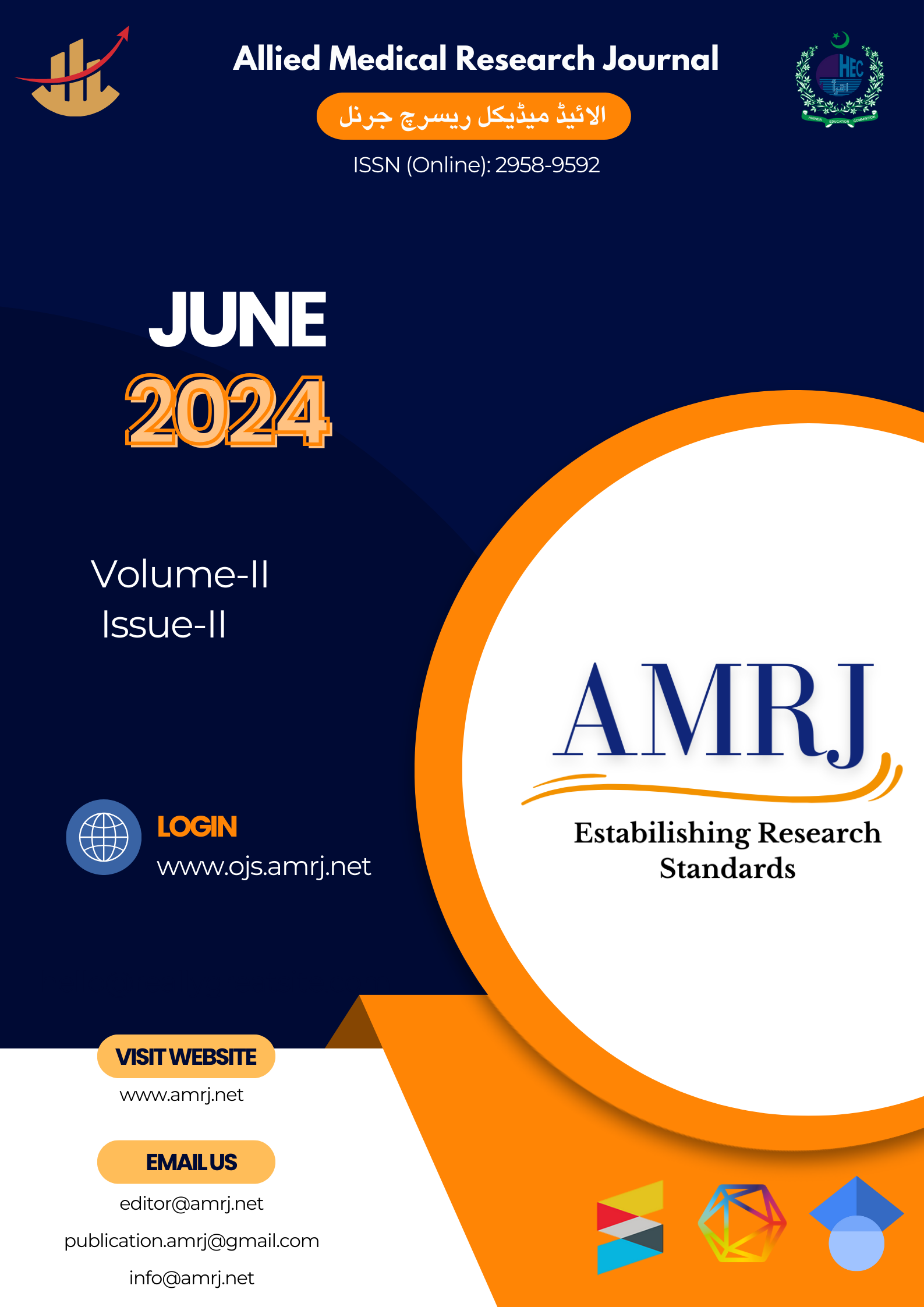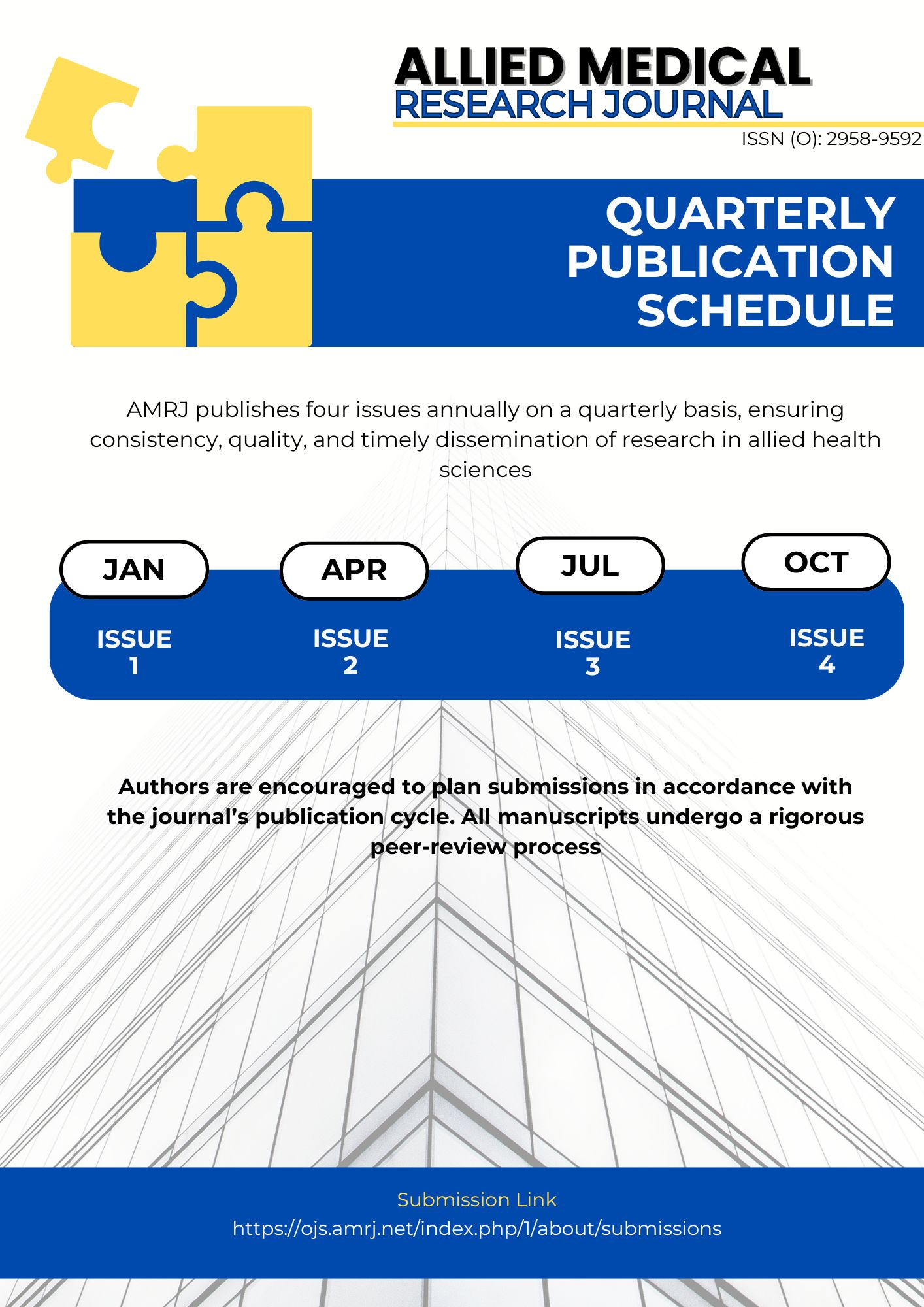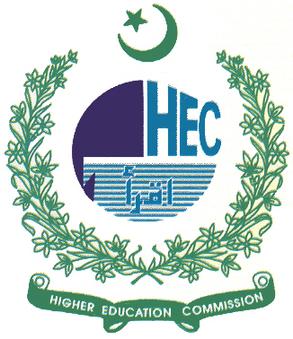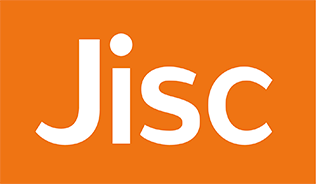Aquatic Therapy as a Modality for Managing Chronic Athletic Injuries: A Systematic Review
Role of Aquatic Therapy in Sports Injuries
Keywords:
Aquatic Therapy, Hydrotherapy, Rehabilitation, Sports InjuriesAbstract
Background: This review will help bridge knowledge gaps by synthesizing the available research and clinical outcomes in order to understand how aquatic therapy works compared to traditional methods in sports injuries. Evidence from such an analysis is relevant for providing evidence-based recommendations. It works toward better integration into the standard rehabilitation protocol, having recovery outcomes and optimized rehabilitation strategies for injured athletes.
Methodology: A literature search on electronic databases including Google Scholar, PubMed, and Cochrane Library has been extended to studies published in English from 2019 to 2024. These databases broadly cover health-related literature for aquatic therapy and athletic injury rehabilitation.
Results: This review analyzed 5 out of 123 studies obtained from various databases, consisting of two high-quality, two moderate-quality, and one low-quality study. The findings of these studies indicated that aquatic therapy is highly effective for rehabilitating chronic athletic injuries, particularly ankle sprains. All the reviewed studies showed a substantial reduction in pain for athletes who underwent aquatic therapy.
Conclusion: Aquatic therapy presents several advantages in rehabilitating chronic athletic injuries. Its unique properties, pain-reducing, function-improving, and physiologically enhancing, make this a holistic approach to injury management.
References
de Subijana CL, Galatti L, Moreno R, Chamorro JL. Analysis of the athletic career and retirement depending on the type of sport: a comparison between individual and team sports. International journal of environmental research and public health. 2020 Dec;17(24):9265.
Li Q, Chen S, Zang Y, Zhang X, Chen H. Aquatic sports rehabilitation on functional recovery of knee joint injury. Revista Brasileira de Medicina do Esporte. 2023 Mar 10;29:e2022_0807.
Wilk K, Joyner D. The use of aquatics in orthopedics and sports medicine rehabilitation and physical conditioning. Taylor & Francis; 2024 Jun 1.
Heath J, Pataky L. Guidelines and Indications for the Use of Aquatic Therapy. InThe Use of Aquatics in Orthopedics and Sports Medicine Rehabilitation and Physical Conditioning 2024 Jun 1 (pp. 17-26). Routledge.
Becker BE. Aquatic therapy in contemporary neurorehabilitation: an update. Pm&r. 2020 Dec;12(12):1251-9.
Carayannopoulos AG, Han A, Burdenko IN. The benefits of combining water and land-based therapy. Journal of exercise rehabilitation. 2020 Feb;16(1):20.
Boling MC, Padua DA, Prentice WE. Rehabilitation of Knee Injuries. InRehabilitation Techniques for Sports Medicine and Athletic Training 2024 Jun 1 (pp. 627-696). Routledge.
Fitzgerald M. 80/20 Endurance: The Complete System for High-Performance Coaching. Simon and Schuster; 2022 Dec 23.
Patil C, Patil P, Fernandez C. Aquatic Therapy: Benefits and Applications in Physiotherapy.
Becker BE. Aquatic Therapy: History, Theory, and Applications. InThe Use of Aquatics in Orthopedics and Sports Medicine Rehabilitation and Physical Conditioning 2024 Jun 1 (pp. 3-16). Routledge.
Iliescu AM, McIntyre A, Wiener J, Iruthayarajah J, Lee A, Caughlin S, Teasell R. Evaluating the effectiveness of aquatic therapy on mobility, balance, and level of functional independence in stroke rehabilitation: a systematic review and meta-analysis. Clinical rehabilitation. 2020 Jan;34(1):56-68.
Patil P, Patil C, Fernandez C. Physiotherapy in Post-Surgical Rehabilitation: Best Practices and Innovations.
Prill R, Karlsson J, Ayeni OR, Becker R. Author guidelines for conducting systematic reviews and meta-analyses. Knee Surgery, Sports Traumatology, Arthroscopy. 2021 Sep;29:2739-44.
Sadaak MM, AbdElMageed SF, Ibrahim MM. Effect of aquatic versus conventional physical therapy program on ankle sprain grade III in elite athletes: randomized controlled trial. Journal of Orthopaedic Surgery and Research. 2024 Jul 11;19(1):400.
Abbasi H, Akhonda A, Sharifatpour R, Abedinzadeh S, Ayatizadeh F. Comparison of the Effect of 8 Weeks of Training in Water and Land Environment on Pain and Range of Motion of Athletes with Acute Ankle Sprain: A Semi-Experimental Study. Journal of Rafsanjan University of Medical Sciences. 2023 May 10;22(1):65-78.
Haider MH, Al-Mnshdawi AM. The effect of in-water exercises on the blood parameters and kinetic balance among the jiu-jitsu players with a severe sprain of the ankle joint. Revista iberoamericana de psicología del ejercicio y el deporte. 2022;17(1):51-4.
Ragab IM. Aquatic therapy versus combined aquatic and land-based therapy in the treatment of chronic lateral ankle sprain. Egyptian Journal of Physical Therapy. 2020 Jun 1;2(1):16-23.
Javorac D, Stajer V, Ostojic S. Case report: Acute hydrotherapy with super-saturated hydrogen-rich water for ankle sprain in a professional athlete. F1000Research. 2020;9.

Downloads
Published
Issue
Section
License
Copyright (c) 2024 Safiya Naz, Sonia Mangi, Rida Saima, Warda Zehra

This work is licensed under a Creative Commons Attribution-NonCommercial 4.0 International License.








